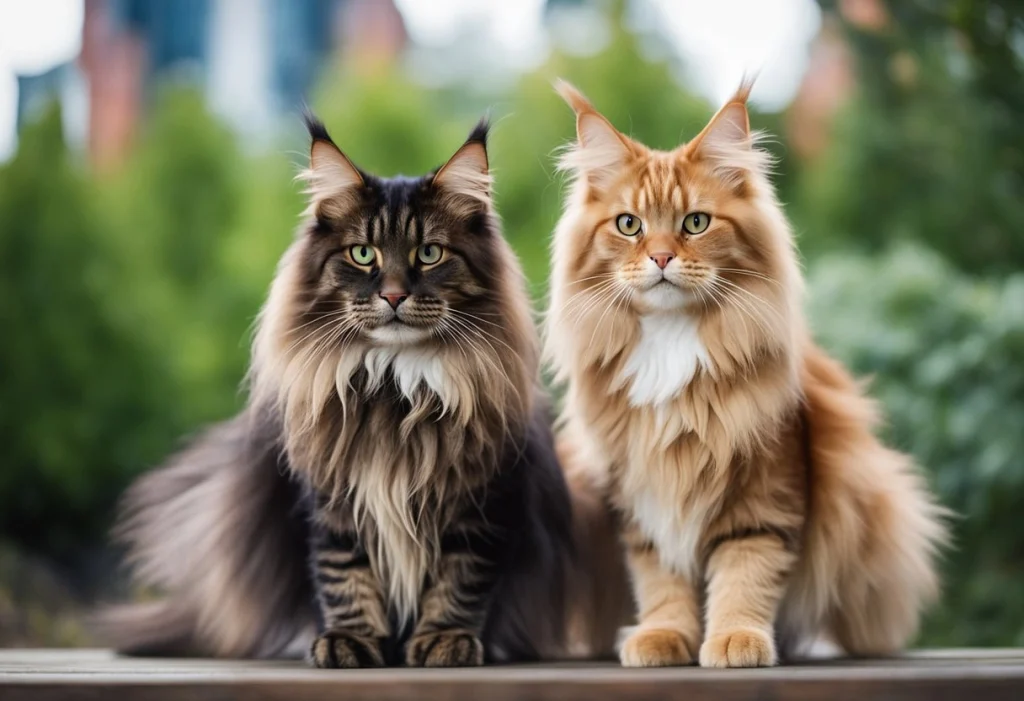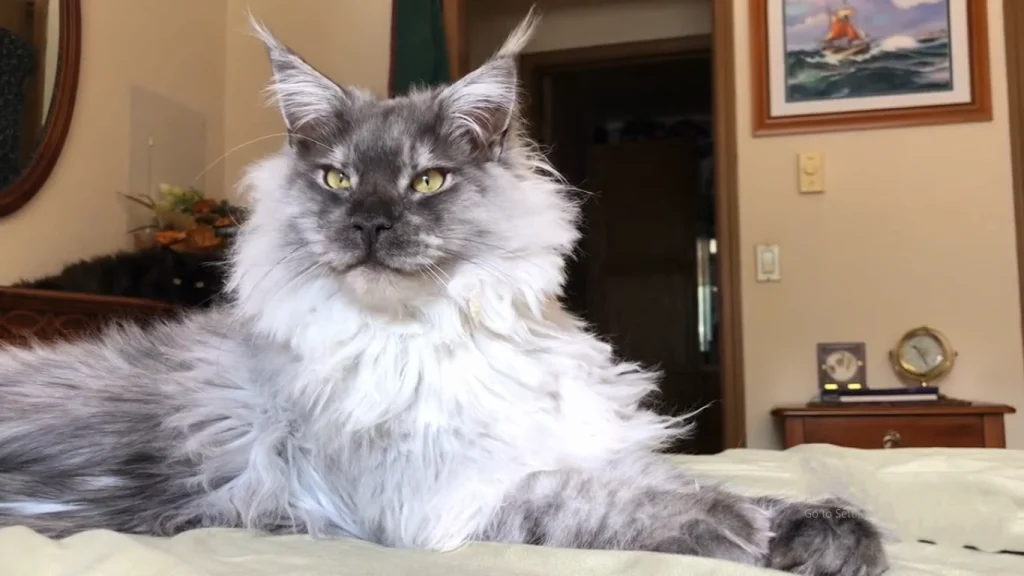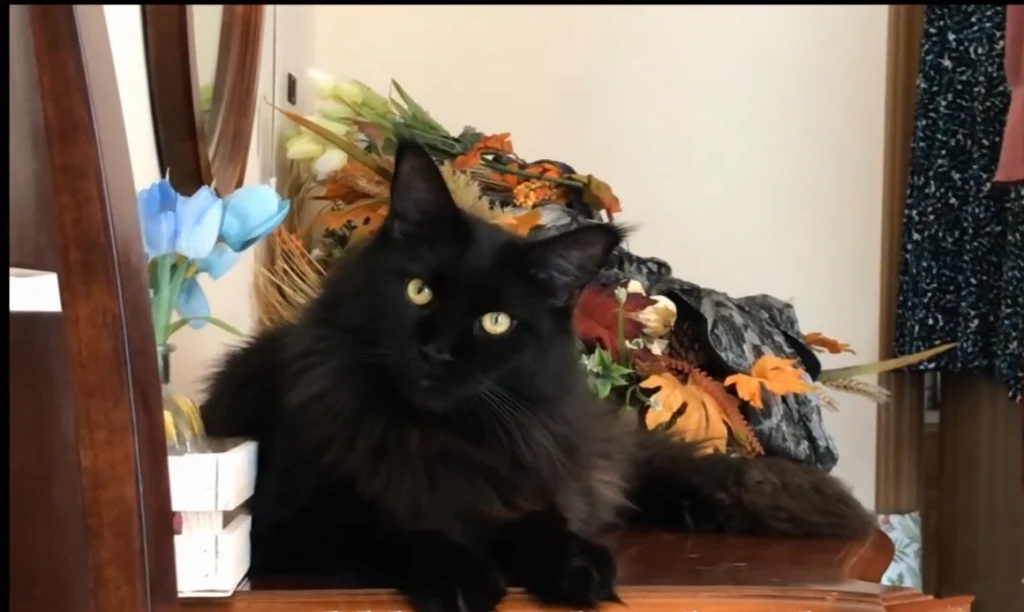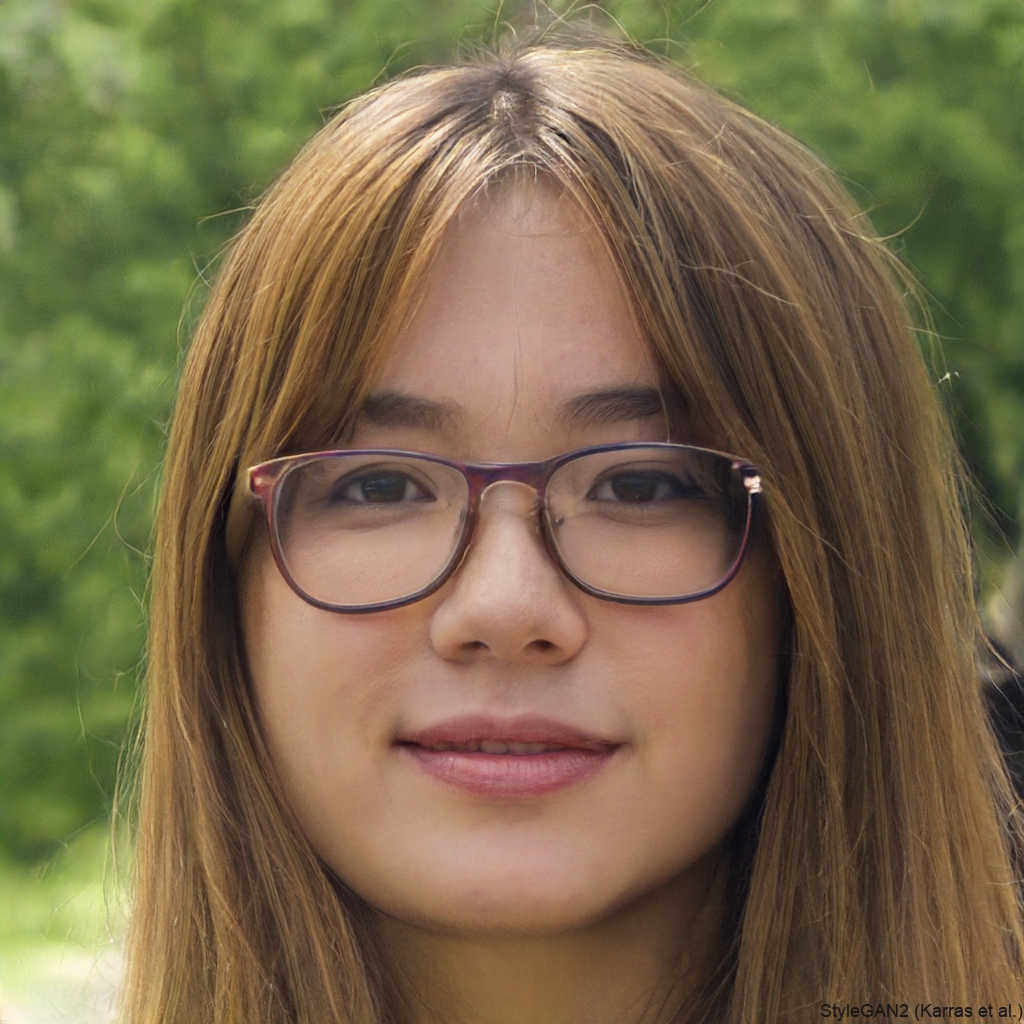European Maine Coon vs American: Key Differences in Breed Characteristics
By: Dorris Abraham

The information in this article is intended to educate cat parents and is not a substitute for veterinary guidance. In case of any concerns about your cat’s health, please talk with your veterinarian.
European and American Maine Coons are both captivating breeds, each with unique features. The main difference lies in their physical appearance and facial structure, with European Maine Coons having a more rugged look and square-shaped muzzles, while American Maine Coons are bred for a more refined appearance. This article explores these differences and helps cat lovers understand which type might be the better fit for them.
Many people may not realize that these two varieties share a common ancestry but have diverged over time due to selective breeding practices. As a result, they exhibit distinct qualities that appeal to different tastes. By examining their traits, personality, and care requirements, readers can make more informed choices when considering adding either of these impressive cats to their home.
The decision between a European and American Maine Coon can significantly impact a cat owner’s experience. Whether seeking a playful companion or a stunning show cat, knowing these differences can help in making the right choice.
Key Takeaways:
- European Maine Coons tend to have a wilder look and stronger facial features.
- American Maine Coons are bred for a more refined appearance and personality.
- Both types share a common history but have evolved into distinct varieties.
Click to explore: Maine Coon Colors & Patterns
History and Origin
The Maine Coon cat breed has a rich and fascinating history that spans both Europe and America. Different environmental factors and breeding practices influenced its development in each region, shaping the distinct features of the European and American Maine Coons.
Also Read: Balinese cats and allergies
Development of Maine Coon in Europe
The European Maine Coon has roots that trace back to the early domestication of cats in Europe. These cats, often adapted to various climates, were often bred for strength and endurance.
Through selective breeding, European Maine Coons developed prominent features such as their square-shaped muzzles and strong bone structure. Many were also influenced by their connection to wildcats like the lynx, which reflected the harsher living conditions of their home regions.
This breed became popular among European cat enthusiasts, especially in countries like France and Germany. The focus on their unique appearance contributed to a unique lineage distinct from their American counterparts.
Click to explore: Maine Coon Food Allergies
Development of Maine Coon in America
The Maine Coon’s American origins are clouded in mystery, with various theories regarding how they arrived in the United States. Some suggest that they were brought over by seafarers from Europe in the early 19th century.
In America, these cats thrived in the harsh New England climate, becoming known for their size and adaptability. The breed became a local favorite in Maine, where it was well-suited for working landscapes.
American breeders later focused on enhancing their playful nature and friendly temperament, leading to a more refined appearance. These factors contributed to the Maine Coon’s rise in popularity as a loving family pet in the United States.
Click to know about: Silver Siberian Cat
Physical Characteristics
The physical traits of Maine Coons differ based on their breed types. European Maine Coons tend to have a more rugged appearance, while American Maine Coons are bred for a refined look. Understanding these differences helps in identifying each type more easily.
European Maine Coon Features
European Maine Coons have distinct features that set them apart. They typically have a broader and more triangular head shape. Their ears are larger and often tufted, giving them a wilder appearance.

The body of a European Maine Coon is more robust and muscular. They tend to be larger and heavier than their American counterparts. Their fur is thick and water-resistant, suitable for colder climates, and has a shaggy texture.
Colors vary widely, but many exhibit classic tabby patterns. This variety enhances their striking looks and individuality.
American Maine Coon Features
American Maine Coons are known for their more refined traits. They usually have a rounder head, which aligns with breed standards. Their ears are slightly smaller compared to the European type but still maintain a tufted tip.

These cats have a sturdy, well-proportioned body that reflects strength without appearing overly bulky. American Maine Coons boast long, flowing fur that is soft and silky.
Click to learn about: Bobtail Cats
Personality and Behavior
The European Maine Coon is known for its friendly and loyal nature. These cats often get along well with other pets, including dogs. They are usually comfortable around new people, making them good companions in family homes.
In contrast, the American Maine Coon can display a slightly different personality. While still affectionate, they may have a more laid-back demeanor. They often prefer to observe before engaging with new experiences or people.
Both types of Maine Coons are playful and enjoy interactive playtime. They often exhibit a gentle yet playful side, which appeals to families and singles alike.
Here are some personality traits of each:
- European Maine Coon
- Loyal
- Friendly
- Adaptable
- American Maine Coon
- Laid-back
- Observant
- Affectionate
Both breeds are known for their unique voices. Despite their large size, they often have soft, gentle meows, which can be surprising. Their playful yet affectionate natures make them popular choices for cat lovers.
Click to learn about: Siberian Cat Lifespan
Breeding and Standards
Breeding standards for Maine Coons differ significantly between Europe and America. Each region has specific characteristics that define how these cats should look and behave.
European Standards for Maine Coons
In Europe, Maine Coons are bred to reflect a more natural and rugged appearance. European standards emphasize a stronger, square-shaped muzzle and larger, bushier ear tufts.
Cats bred under these guidelines often have a more substantial bone structure, giving them a sturdy look. Their fur is typically thicker and longer, suitable for colder climates.
Here are some key features of European Maine Coons:
- Muzzle: Square and strong
- Ears: Tall with tufts
- Body: Muscular with a broad chest
- Tail: Long and bushy
These traits contribute to the breed’s overall wild appearance, which many enthusiasts appreciate.
American Standards for Maine Coons
American Maine Coons are bred according to different standards that focus on a more refined look. The breed standard in the U.S. often highlights a gently rounded head and a more elongated body.
Some of the specific characteristics include:
- Muzzle: Slightly less pronounced than European counterparts
- Ears: Medium-sized with less tufting
- Body: More delicate with a slimmer build
- Tail: Bushy but not as long
These standards aim for a balanced and elegant appearance, appealing to pet owners seeking a refined feline companion. The emphasis is on a friendly demeanor and adaptability, making them great family pets.
Click to learn about fascinating: Chocolate Persian Cat
Frequently Asked Questions
Many people have questions about the differences between European and American Maine Coons. Here are some common inquiries regarding size, personality, price, identification traits, shedding, and purchase considerations.
Conclusion
The European and American Maine Coons, though sharing a common ancestry, have evolved into distinct breeds with unique characteristics. European Maine Coons boast a rugged, wild appearance with strong facial features, while American Maine Coons are bred for a more refined and elegant look. Both types offer exceptional companionship, but their differences in physical traits and temperament cater to varying preferences, making it essential for potential owners to understand these nuances before choosing their ideal feline friend.
Whether you’re drawn to the European Maine Coon’s bold, untamed charm or the American Maine Coon’s graceful and sociable nature, both breeds promise to be loving and playful additions to any home. By considering their history, physical traits, and personalities, cat enthusiasts can make an informed decision that aligns with their lifestyle and preferences, ensuring a fulfilling bond with these majestic cats.

About the Author
Dorris Abraham
Dorris, a skilled writer with a degree in English, combines her lifelong love for cats with years of expertise in feline behavior and care. A proud pet parent and passionate advocate for pedigreed and fluffy breeds, she creates authoritative, engaging blogs that inform and inspire cat lovers everywhere.
